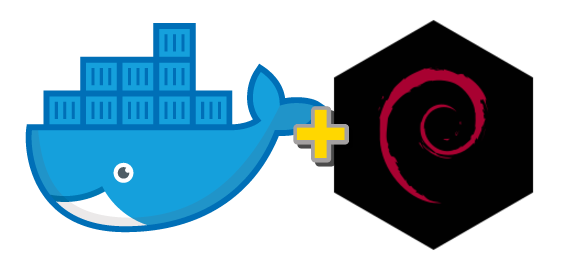
In this step we’re going to start a new container and tell it to run the hostname command. Run a single task in an Alpine Linux container In this section you’ll try each of those options and see how Docker manages the workload. In the background: For long-running services like websites and databases.Interactively: This connects you to the container similar to the way you SSH into a remote server.To run a single task: This could be a shell script or a custom app.There are different ways to use containers. Task 1: Run some simple Docker containers
DOCKER DEBIAN FREE
If you do not have a DockerID (a free login used to access Docker Hub), please visit Docker Hub and register for one. This will make a copy of the lab’s repo in a new sub-directory called linux_tweet_app. Use the following command to clone the lab’s repo from GitHub (you can click the command or manually type it). You will need all of the following to complete this lab: Task 2: Package and run a custom app using Docker.Task 1: Run some simple Docker containers.


DOCKER DEBIAN HOW TO
Finally, we’ll look at how to use bind mounts to modify a running container as you might if you were actively developing using Docker.ĭifficulty: Beginner (assumes no familiarity with Docker) We’ll start by running some simple containers, then we’ll use a Dockerfile to build a custom app. They are available 24×7 and will take care of your request immediately.In this lab, we will look at some basic Docker commands and a simple build-ship-run workflow.
DOCKER DEBIAN INSTALL
Of course, you don’t have to install Docker on Debian 11, if you use one of our NVMe VPS Hosting plans, in which case you can simply ask our expert Linux admins to install Docker on Debian 11 for you. Also, you learned how to configure a non-root user to run docker containers. You successfully installed and configured the Docker server on your Debian 11 VPS. We can now check by accessing the user with this below command: su - robertĪnd then we’ll run the hello world docker docker run hello-worldĬongratulations. With the above command, our user will be created and assigned to the docker group. In this example we will use a test user called “robert” to run the docker container.Ĭreate the new user ‘robert’ on our Debian System using the following command: useradd -m -s /bin/bash -G docker robert.You need to add your non-root user to the ‘docker’ group. mo GET YOUR VPS Optional steps (Allowing Non-root user to use Docker)ĭocker only accepts root user by default, but in this step we’ll enable a non-root user to be able to run containers on it.

If you need to allow a non-root user to run Docker containers, you can follow the optional steps below. You have successfully installed Docker on your Debian 11.

DOCKER DEBIAN UPDATE
You should now run a new update & upgrade on your system to update everything:.$(lsb_release -cs) stable" | sudo tee /etc/apt//docker.list > /dev/null Then, we’ll add the docker repository using this command:.Since our dependecies are installed, we’ll proceed with adding the Docker Repository so we can fetch our download, first of all run the following command to add the GPG Key:Ĭurl -fsSL | sudo gpg -dearmor -o /usr/share/keyrings/docker-archive-keyring.gpg.A root user or a user with root privileges.īefore we start installing everything, we should upgrade our system, so after logging in as root, you can run: apt-get update -yĪpt-get upgrade -y Installing dependenciesĪlso, it’s required by Docker some dependencies, so you can easily install them with this command: apt-get install apt-transport-https ca-certificates curl gnupg lsb-release -y Adding the Docker Repository.Optional steps (Allowing Non-root user to use Docker).


 0 kommentar(er)
0 kommentar(er)
